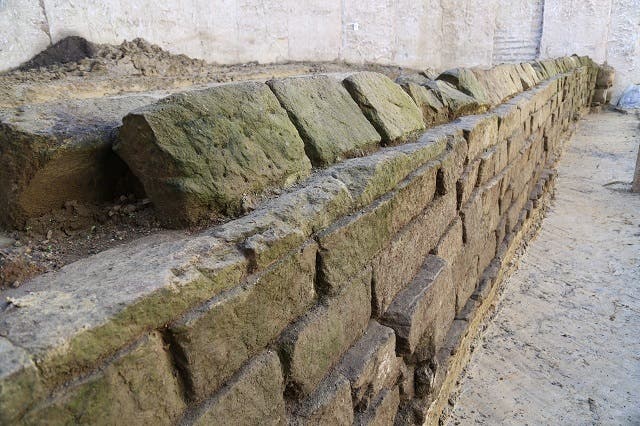Few parts of the world can boast a history as rich as Rome, but even for Rome, this is a spectacular find. A 2,300-year-old aqueduct (or rather, a stretch of it) was discovered by metro workers. This is the oldest aqueduct in the city.

The impressive finding was actually made in 2016 but was not reported to the public until now. Simona Morretta, who led the team of archaeologists, said that the aqueduct lies 17-18 meters below Rome’s Piazza Celimontana, in close proximity to the Colosseum. It’s hidden so deep beneath the ground that without subway works, it would have likely never been found.
“It was thanks to the concrete bulkheads used for work on the metro that we could get down to that level,” explained Morretta.
“The opportunity to safely reach this depth allowed us to uncover and document an exception sequence of stratigraphy and structures from the Iron Age (tombs and grave objects from the tenth century BC) to the modern age (foundations of 19th-century housing”.
The aqueduct is made up of equally-sized blocks arranged in five rows and was likely part of the Aqua Appia — the first Roman aqueduct, constructed in 312 BC. Aqua Appia flowed for 16.4 km to Rome from the east and fed the city with an estimated 73,000 cubic meters of water per day. The aqueduct has been partially dismantled and rebuilt and is set for display, although the location hasn’t been revealed yet.
But the aqueduct isn’t the only thing they found. A closer investigation also revealed remains of food leftovers, showing what ancient Romans ate and what animals they kept around the house. So far, researchers found evidence of wild boars, swans, pheasants, and large seawater fish. When finished, the new metro line will host a museum exhibiting all these findings.
Work on the new metro line has been greatly delayed, both due to lack of money and numerous archaeological findings. Previously, a second-century imperial barracks was found, containing 39 rooms, preserved with original mosaics and frescoes. So far, the 18km of the line in operation has reportedly cost the city over $20 billion.
Was this helpful?



